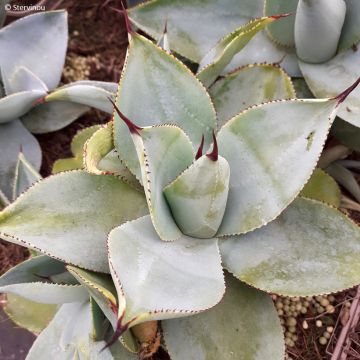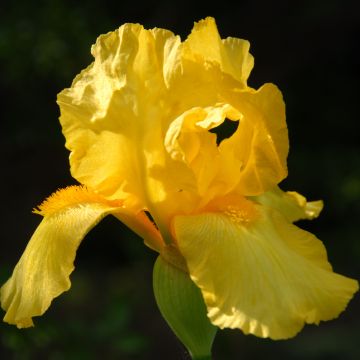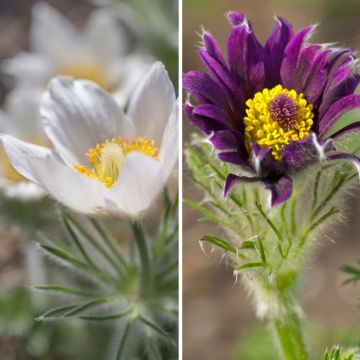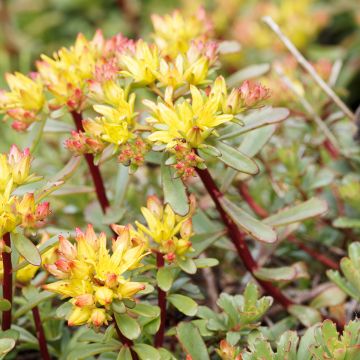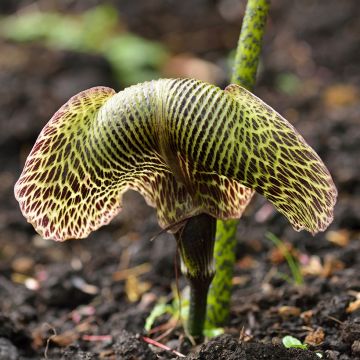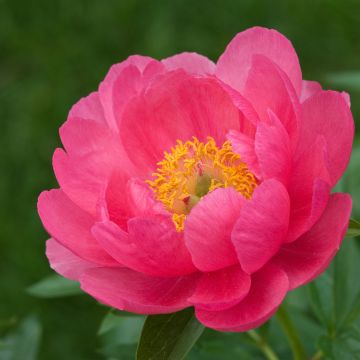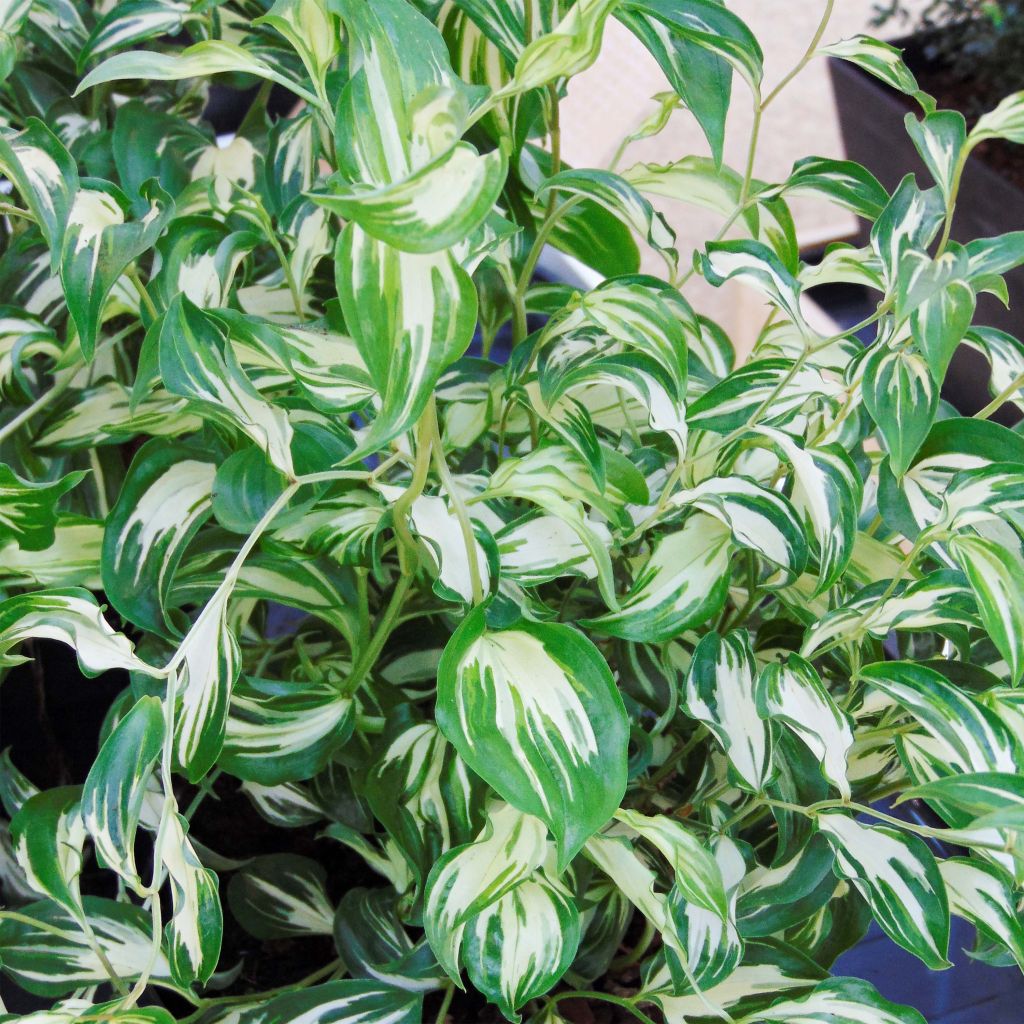

Disporum cantoniense Moonlight
Disporum cantoniense Moonlight
Disporum cantoniense Moonlight
Chinese Fairy Bells
Beautiful plant perfectly in line with my expectations.
Béatrice, 03/06/2021
Special offer!
Receive a €20 voucher for any order over €90 (excluding delivery costs, credit notes, and plastic-free options)!
1- Add your favorite plants to your cart.
2- Once you have reached €90, confirm your order (you can even choose the delivery date!).
3- As soon as your order is shipped, you will receive an email containing your voucher code, valid for 3 months (90 days).
Your voucher is unique and can only be used once, for any order with a minimum value of €20, excluding delivery costs.
Can be combined with other current offers, non-divisible and non-refundable.
Why not try an alternative variety in stock?
View all →This plant carries a 12 months recovery warranty
More information
We guarantee the quality of our plants for a full growing cycle, and will replace at our expense any plant that fails to recover under normal climatic and planting conditions.

Would this plant suit my garden?
Set up your Plantfit profile →
Description
Disporum cantionense Moonlight is a very pretty compact form with variegated foliage. A Chinese perennial plant related to Solomon's Seal. Forming a flexible and slightly loose bushy clump, it illuminates shaded areas with a beautiful foliage splashed with white-cream that will take on lovely pink hues in late autumn. The spring flowering, in the form of pendulous bell-shaped flowers in a yellowish-white colour, is followed by the formation of small decorative berries, dark blue-black in colour. More or less evergreen depending on the severity of the winter, this variety can withstand temperatures as low as -15°C, regrowing from the stump in spring. It is perfect as groundcover at the base of spring shrubs, or in a pot on the terrace or balcony.
Disporum cantionense belongs to the Colchicaceae family. It is a perennial plant with a creeping rhizome without stolons that spreads over time without becoming invasive. It is native to Chinese forests, Taiwan, India, Laos, Nepal, Thailand, and Vietnam, where it can be found growing at altitudes between 700 and 3000m (2297 and 9842ft). The 'Moonlight' cultivar is a recent Dutch horticultural creation, a mutation of the Disporum cantoniense Aureovariegata, which is better known among gardeners.
This evergreen plant can withstand temperatures as low as -12°C, producing very flexible stems that are both upright and trailing, slightly branched, 50 cm (20in) tall, and forming a somewhat disorderly clump occupying at least 50 cm (20in) in area. The foliage consists of alternate leaves, measuring 5 to 12 cm (2 to 5in) long and 1 to 5 cm (1 to 2in) wide, strongly lanceolate, elongated, often beautifully twisted, with faintly marked veins. The leaves are heavily streaked and variegated with very pale cream to yellow on a light green background. The young leaves, remarkably bright, are almost white, while mature leaves take on lovely pink hues in November, due to the cold, in the cream variegations. The flowering occurs in May-June, in the form of pale yellowish-white tubular flowers, slightly open, 1 to 2 cm (1in) long, arranged in pendulous clusters of 3 to 10 units, arising from the terminal part of the stems or in the axils of the leaves. It is followed by spherical dark blue-black fruits, measuring 8-10 mm (1in) in diameter.
The Canton Disporum is undoubtedly the most robust and easiest to grow in its genus, in shade and in moist soil, preferably non-calcareous. 'Moonlight' will therefore appreciate the coolest areas of the garden, where it will bring a graceful touch of light. It is easily grown in pots, allowing it to be associated with larger plants on the terrace that will provide the shade it seeks. This plant, which requires little care and tolerates competition from the roots of trees and shrubs, cannot tolerate drought. It should be planted in the undergrowth or in dappled sunlight (introduce several plants in a small area), to accompany the spring blooms of Magnolia, Kolwizia, Deutzia, spirea, lilac, flowering cherry trees. In these flowerbeds at the base of shrubs, for example, accompany it with Anemone 'Robinsoniana', Macleayas, and golden yellow buttercups. Superb in a flowerpot, associate it with blue squills, which it will succeed, place it under Fatsia, Papyrus, Colocasia...
Report an error about the product description
Disporum cantoniense Moonlight in pictures


Flowering
Foliage
Plant habit
Botanical data
Disporum
cantoniense
Moonlight
Liliaceae
Chinese Fairy Bells
Cultivar or hybrid
Other Perennials A to Z
View all →Planting and care
Disporum cantionense appreciates humus-rich, acid to neutral soils, always moist but well-drained. Plant it in partial shade or not too dense shade. Pot cultivation is easy in a substrate composed of pure leaf soil regularly enriched with well decomposed compost. Repetitive watering with calcareous water should be avoided as this pant prefers rainwater. It is sometimes susceptible to attacks from gastropods and whiteflies. Divide clumps in spring.
Planting period
Intended location
Care
Planting & care advice
-
, onOrder confirmed
Reply from on Promesse de fleurs
Similar products
Haven't found what you were looking for?
Hardiness is the lowest winter temperature a plant can endure without suffering serious damage or even dying. However, hardiness is affected by location (a sheltered area, such as a patio), protection (winter cover) and soil type (hardiness is improved by well-drained soil).

Photo Sharing Terms & Conditions
In order to encourage gardeners to interact and share their experiences, Promesse de fleurs offers various media enabling content to be uploaded onto its Site - in particular via the ‘Photo sharing’ module.
The User agrees to refrain from:
- Posting any content that is illegal, prejudicial, insulting, racist, inciteful to hatred, revisionist, contrary to public decency, that infringes on privacy or on the privacy rights of third parties, in particular the publicity rights of persons and goods, intellectual property rights, or the right to privacy.
- Submitting content on behalf of a third party;
- Impersonate the identity of a third party and/or publish any personal information about a third party;
In general, the User undertakes to refrain from any unethical behaviour.
All Content (in particular text, comments, files, images, photos, videos, creative works, etc.), which may be subject to property or intellectual property rights, image or other private rights, shall remain the property of the User, subject to the limited rights granted by the terms of the licence granted by Promesse de fleurs as stated below. Users are at liberty to publish or not to publish such Content on the Site, notably via the ‘Photo Sharing’ facility, and accept that this Content shall be made public and freely accessible, notably on the Internet.
Users further acknowledge, undertake to have ,and guarantee that they hold all necessary rights and permissions to publish such material on the Site, in particular with regard to the legislation in force pertaining to any privacy, property, intellectual property, image, or contractual rights, or rights of any other nature. By publishing such Content on the Site, Users acknowledge accepting full liability as publishers of the Content within the meaning of the law, and grant Promesse de fleurs, free of charge, an inclusive, worldwide licence for the said Content for the entire duration of its publication, including all reproduction, representation, up/downloading, displaying, performing, transmission, and storage rights.
Users also grant permission for their name to be linked to the Content and accept that this link may not always be made available.
By engaging in posting material, Users consent to their Content becoming automatically accessible on the Internet, in particular on other sites and/or blogs and/or web pages of the Promesse de fleurs site, including in particular social pages and the Promesse de fleurs catalogue.
Users may secure the removal of entrusted content free of charge by issuing a simple request via our contact form.
The flowering period indicated on our website applies to countries and regions located in USDA zone 8 (France, the United Kingdom, Ireland, the Netherlands, etc.)
It will vary according to where you live:
- In zones 9 to 10 (Italy, Spain, Greece, etc.), flowering will occur about 2 to 4 weeks earlier.
- In zones 6 to 7 (Germany, Poland, Slovenia, and lower mountainous regions), flowering will be delayed by 2 to 3 weeks.
- In zone 5 (Central Europe, Scandinavia), blooming will be delayed by 3 to 5 weeks.
In temperate climates, pruning of spring-flowering shrubs (forsythia, spireas, etc.) should be done just after flowering.
Pruning of summer-flowering shrubs (Indian Lilac, Perovskia, etc.) can be done in winter or spring.
In cold regions as well as with frost-sensitive plants, avoid pruning too early when severe frosts may still occur.
The planting period indicated on our website applies to countries and regions located in USDA zone 8 (France, United Kingdom, Ireland, Netherlands).
It will vary according to where you live:
- In Mediterranean zones (Marseille, Madrid, Milan, etc.), autumn and winter are the best planting periods.
- In continental zones (Strasbourg, Munich, Vienna, etc.), delay planting by 2 to 3 weeks in spring and bring it forward by 2 to 4 weeks in autumn.
- In mountainous regions (the Alps, Pyrenees, Carpathians, etc.), it is best to plant in late spring (May-June) or late summer (August-September).
The harvesting period indicated on our website applies to countries and regions in USDA zone 8 (France, England, Ireland, the Netherlands).
In colder areas (Scandinavia, Poland, Austria...) fruit and vegetable harvests are likely to be delayed by 3-4 weeks.
In warmer areas (Italy, Spain, Greece, etc.), harvesting will probably take place earlier, depending on weather conditions.
The sowing periods indicated on our website apply to countries and regions within USDA Zone 8 (France, UK, Ireland, Netherlands).
In colder areas (Scandinavia, Poland, Austria...), delay any outdoor sowing by 3-4 weeks, or sow under glass.
In warmer climes (Italy, Spain, Greece, etc.), bring outdoor sowing forward by a few weeks.






































